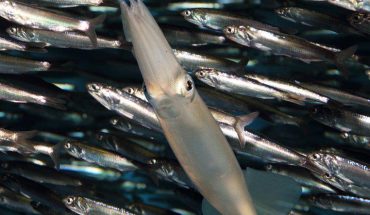This demonstrates their indispensable role in the balance of the carbon cycle.
Fish are essential parts of the earth’s ecosystem. In addition to contributing to the food chain, they also help keep the environment cleaner and healthier. According to a recent study, fish alone contribute to removing 1.65 billion tonnes of carbon each year.
Scientists have so far had a somewhat limited understanding of the role that fish play in the global carbon cycle. A recent study by researchers at Rutgers University provides more information on the subject. According to the study published in the journal Limnology and Oceanography, fish store 1.65 billion tonnes of carbon per year in their droppings, respiration and other excretions. In perspective, this represents about 16% of the total amount of carbon that descends below the upper layers of the ocean.
A STILL INCOMPLETE BUT IMPORTANT STUDY FOR UNDERSTANDING THE IMPORTANCE OF FISH
This information is essential as it means that fish are critical carbon regulators below and above the oceans. However, even if not all fish are on the endangered species list, pollution, warming waters, and overfishing can have unexpected impacts on the global fish population and upset the carbon cycle’s delicate balance. More research is still needed on the absolute abundance of fish, their collective biomass, and their carbon transport role to understand the risk better.
Either way, this study is already a big step forward. “Our study is the first to examine the impact of fish on carbon flux,” ocean scientist Grace Saba, lead study author, told Phys.org. She explained that the study is an essential first step in future studies to understand the marine ecosystem’s impact on greenhouse gas regulation. Many factors, such as fish migration or the mixing of oceanic waters, will notably have to be considered for these future studies.
Rich Carey / Shutterstock.com

FISH AS IMPORTANT AS PLANKTON IN THE CARBON CYCLE.
As to how fish manage to absorb so much carbon, it is mainly thanks to phytoplankton. The carbon dioxide absorbed by the ocean is taken up by surface algae: phytoplankton. These algae can stay on the surface and be eaten by fish or sink to deep water, where they can be used by organisms that inhabit the seabed. The transformation of carbon dioxide and nutrients into carbon, its sinking and decomposition on the ocean floor is known as the biological carbon pump.
“The carbon that finds its way beneath the sunny layer is sequestered or stored in the ocean for hundreds of years or more, depending on how deep and where the organic carbon is exported. This natural process results in a sink that acts to balance the sources of carbon dioxide,” explained Grace Saba. Ultimately, the researchers estimated that fish’s contribution to the carbon cycle could equal that of zooplankton, Science Alert reported.




